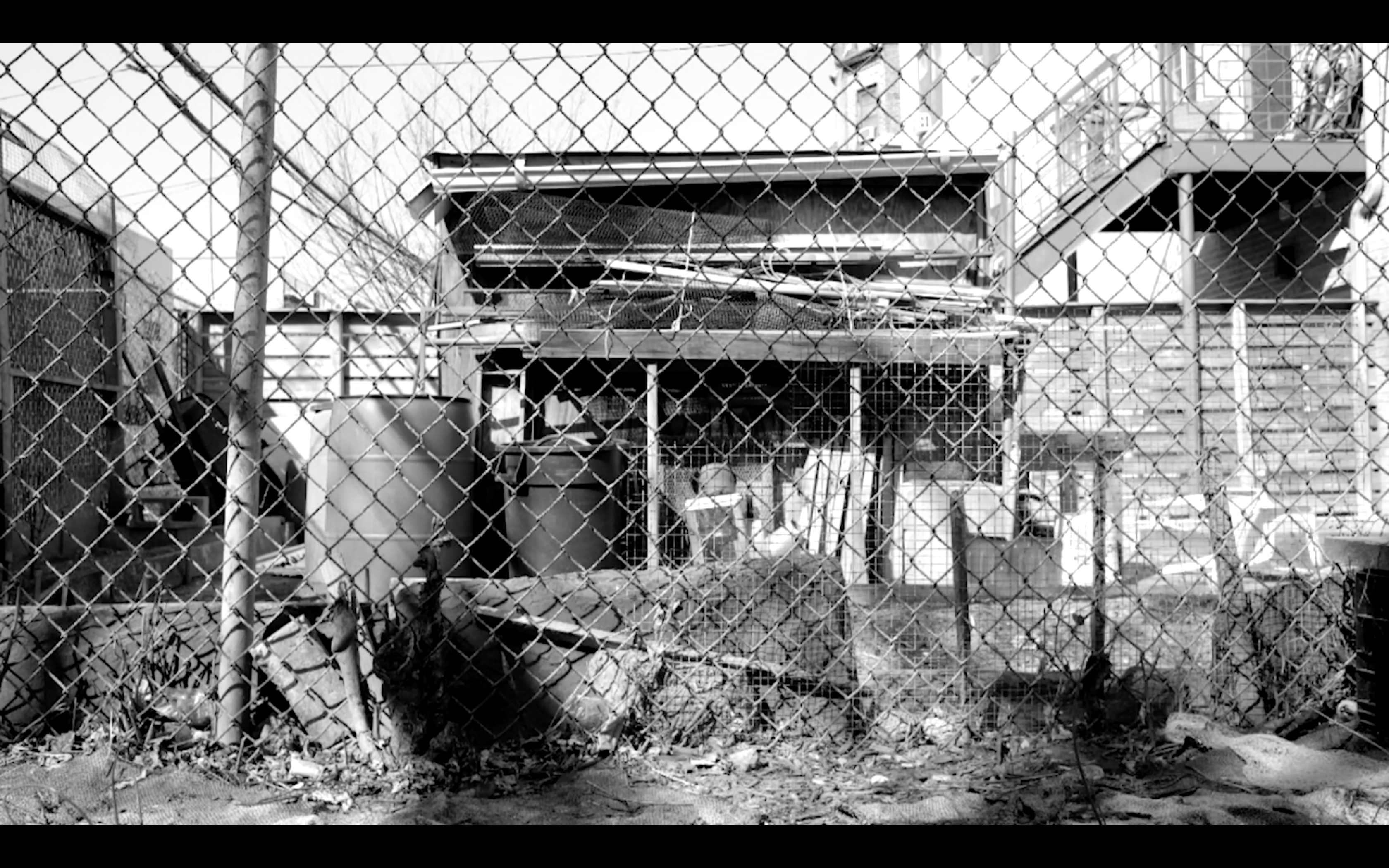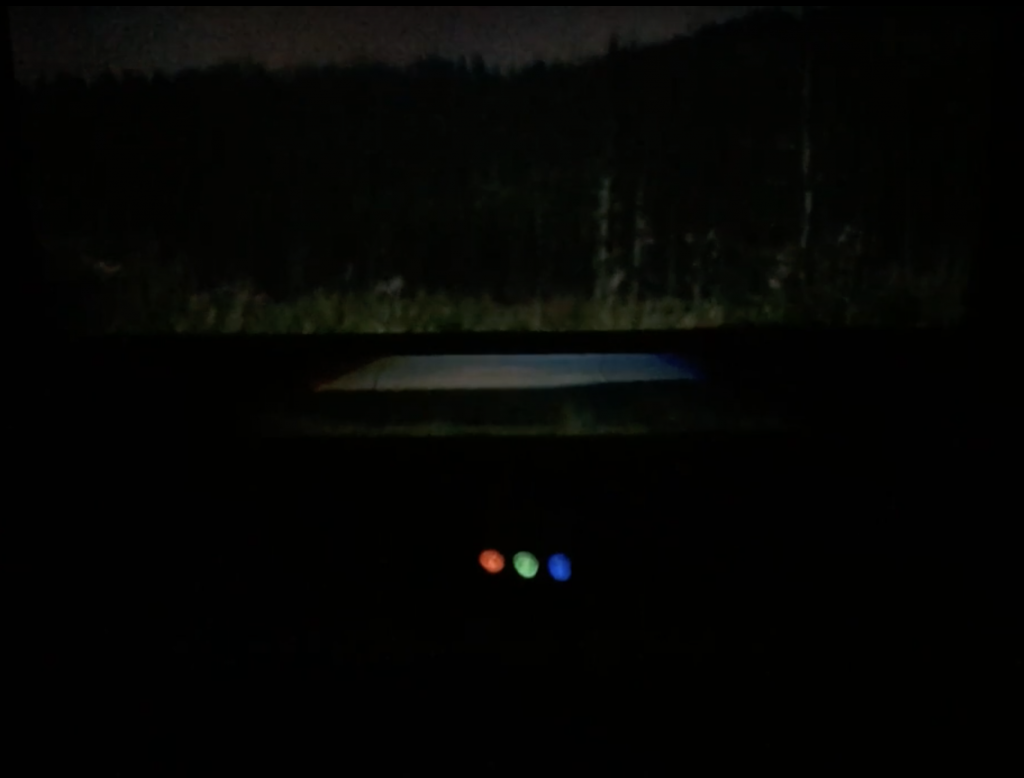I. Practice
I made a short video with white and gray toned clips as a practice. It’s a little shorter than two minutes, and its moods progress from peaceful & dreamy to excited & anxious, and then to a resolved quietness.
<receding dream>:
https://drive.google.com/open?id=18qf8y5NmDMLn5UITjIo1bIJik_MQqQA9
<Stillshots from receding dream>:
II. Study
Bill Viola’s <Moving Stillness: Mount Rainier 1979>, 1979
Video: https://drive.google.com/open?id=1SmznK3iwjCJ2FQ0XBG0GzuMbMaV9NdNT
Bill Viola’s <Moving Stillness: Mount Rainier 1979> was displayed for his recent exhibition <Moving Stillness> at James Cohan gallery. <Mount Rainier 1979> consists of a photograph on a screen, water in a tank, and lights on the water. The photograph of Mount Rainier is on a big, thin screen, which is located above a shallow, wide, rectangular-shaped water tank. Behind the flailing screen is three strong lights—red, green, and blue—that are projected on the water. The room is extremely dark—so dark that people were bumping into one another despite their very slow walking.
The water is constantly stirred, so the three lights on the water are consistently moving in curvy distortions. The photograph of Mount Rainier is also in a constant motion, as the screen moves like a flowing stream, distorting the image in round, gentle curves. The image of Mount Rainier very dim, although the shape of the mountain is visible, so its reflection on the water behind the screen looks more vivid than the original image.
All elements in the exhibition—the photograph of Mount Rainier, its reflection, the projected colors—are in constant motion, but none of them relocate. They constantly move in their still positions. However, ironically, the water in the tank, which is the source of all the “still motions,” is the most invisible element in the display. Although the water is in constant motion, its movement is not as visible as the other elements whose motions it has caused.
I was fascinated by the coexistence of the extreme obscurity and the powerful presence. Every single element of the piece is very blurry and dim, but the collective presence of the whole piece is very strong and affecting. Moreover, the ironic coexistence of stillness and movement is also intriguing. I felt as though I was peaking into someone’s memory piece that has become a blurry dream.
<Mount Rainier 1979> captures and distorts time in a confusingly interesting way. The sequence of time is non-linear, as the still image of the mountain froze one moment and extends it as long as one looks at it. The time of the piece contains simultaneous as well, because the image of the mountain moves along with the screen, while the water on which the image is reflected also moves. Different elements of the piece move at the same time, and one image on different positions—screen and water—moves simultaneously but in slightly different manners. Furthermore, the time(s) of <Mount Rainier 1979> is repetitive, as the images on different elements repeat the similar motion of flowing and flailing, on the screen and the water.
III. Storyboard
I wrote down my title, reference, synopsis, and list of scenes, as well as the actor.
After I did my first two photoshoots, I edited the sequence of scenes as well as adding and deducting scenes. I marked scenes that have not yet been shot.
I also made notes for the 2nd and the 3rd film shoots for efficiency and accuracy. The following is a list of senes for the 2nd shoot, with a plan to take as much footages as possible within the given time and the geographical allowances in mind:
IV. Filming
I had 3 photoshoots. The 1st filming was for atmospheric scenes, for which I simply walked around my neighborhood in Bed-Stuy, Brooklyn with my camera and took still footages. The 2nd shoot was in Chinatown, Manhattan, during which my actor Kris and I went together and filmed. Both the first and the second shoots took place in the afternoon, between 2 pm to 6 pm. The 3rd one was inside my house in Bed-Stuy, Brooklyn with my actor, in the evening when the sun had started gone down. The indoor scenes have warmer yet dimmer artificial lights, making the footages look orange. This later required color editing, which luckily inspired me to use black & white as an element.
<Stillshots from the 1st shoot>
<Stillshots from the 2nd shoot>
<Stillshots from the 3rd shoot>
V. Editing
I rearranged the order of all the scenes in order to efficiently edit my video on Premiere. I also added a song to my video—Arca’s <Piel>. The following image is my rearranged list of scenes.
VI. Video
<asleep>:
https://drive.google.com/open?id=1y_CFSMe_-ZVQT8qrlf7S0EqhxUSkN7B9
<Stillshots from asleep>:
My short video <asleep> captures the blurry space between worlds of the awake and the asleep. The main character sleeps in the stillness of their surroundings. They wake up and wander around with busy motions in the busy world, but they keep waking up again. I’m happy with some of the scenes that I’d taken, because they are beautiful and focused, as well as fitting to the theme of the video. I’m satisfied with my subject matter, dream, which is the source of confusion and the key to the plot. I would like to improve my video by cutting out or shortening some of the scenes, so the pace of the video is faster and the whole video more concise. I’d also need to credit the artist of the music, Arca, whose song <Piel> I used for my video.




















